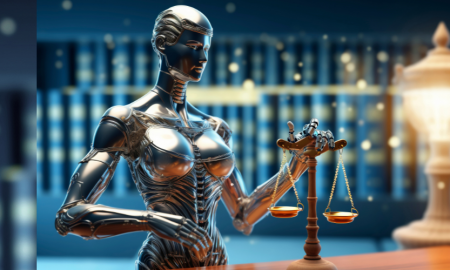
This Brain Fingerprinting Technology Can Detect Lies But How Reliable Is It in Court?

Proving whether someone’s telling the truth or lying in court is never an easy task, hence the famous theory, ‘guilty until proven otherwise.’ Say you were accused of stealing a very precious artifact, there is no way to tell for certain that you committed the crime without convincing proof.
Take Oscar Pistorius’ homicide case which dragged on for years because the judges struggled to find solid evidence to prove that he intentionally killed his girlfriend even though he continuously denied the accusations.
Certain pieces of evidence might have hinted that he could be the culprit, but how can you tell for certain whether he had been telling the truth or somehow just framed? Enter the ever-evolving mind-reading technology that has made it easier to tell if someone is lying or telling the truth.
Lie Detector Test, fMRI
Courts remain hesitant to consider this type of information because there’s a loud debate on the interpretation. But, we might see the proliferation of these types of technology after recent research showed that there’s already an improvement.
There are many ways to make the concealed truth come out – the first is the widely known lie detection test, wherein the gadget measures a person’s physiological response such as the blood pressure, sweat, pupil dilation, and heart rate to a straightforward question.

A lie detector test will check your physiological response.
Then there’s also the functional magnetic resonance imaging, or fMRI, a technique in which brain scans are used to locate brain signature for lying. Although this is typically harder to trick, it can still be cheated by those who utilize two mental countermeasures, a University of Plymouth study found.
Brain Fingerprinting
But as per researchers, brain fingerprinting, also dubbed as a concealed information test, is not like the typical lie detection test. This technology will reportedly reveal the knowledge’s fingerprint in the brain.
For example, a suspect claims he had never seen a blue diamond in his entire life – these factors are looked at: where the incident happened, what was used for the theft to materialize, and what type was stolen.

Electroencephalography is a technique to record the brain’s electrical activity.
This approach collects electrical signals with the electroencephalography, a method that records signals that show the brain responses. The method aims to spot deception by identifying the P300, which are responses to a question or visual stimulus. This will then help authorities know if the person recognized the object or not.

As with the example, if the person in question sees a blue diamond and there was a P300 response, it suggests that he may be lying
Specifically, there will be a spike in the electrical activity within one-third of a second after seeing a quite familiar object. The science behind this is that subconsciously, the brain has an uncontrollable reaction that can be read by the technology.
As for the suspect, if a blue diamond of the same kind of the one missing was shown to the suspect and then he registered a P300 response, then that may suggest that he was lying. This is because it is believed that the person in question will react first before they are able to hide the truth inside.
Misuse?
It can be expected that not all courts will be receptive to this. Of course, it could potentially be a violation of the right to privacy and right not to incriminate. However, in India, this technique was permitted. In the case of Aditi Sharma, her brain responses incriminated that she killed her fiancé.
Her reaction paved way for her to be convicted but this was later overturned. Despite this, the Supreme Court said it’s not closing its doors on the method, especially if the person gives consent.
More in Legal Advice
-
New York to Mail Out One-Time Inflation Rebates. Here’s the Eligibility List
New York is preparing to send out its first-ever inflation refund checks, providing financial relief to millions of residents as prices...
October 3, 2025 -
Here’s What Artists Should Know About Copyright & Its Implications
Copyright protects your art from the moment you create it. The second your drawing, painting, sculpture, or photo is fixed in...
September 27, 2025 -
Everything to Know About Vogue America’s New Editor, Chloe Malle
Chloe Malle just stepped into one of the most powerful roles in fashion media: Head of Editorial Content at Vogue America....
September 21, 2025 -
Did Barron Trump Apply to Harvard? Clearing Up the Rumors
Speculation often swirls around public figures, and in recent months Barron Trump’s college choices became part of the conversation. Questions surfaced...
September 20, 2025 -
Can You Be Naked in Texas?
The Texas public nudity law isn’t as simple as “no clothes, you are in trouble.” It all comes down to intent,...
September 13, 2025 -
Why AI Is Now a Necessity, Not a Choice, for Law Firms
Artificial intelligence is no longer a futuristic concept for the legal industry. It is steadily changing how law firms operate, not...
September 13, 2025 -
Waikiki Lifeguard Cleared in Confrontation With Notorious Criminal
On a hot day at Kuhio Beach, veteran lifeguard Christopher Kekaulike Kam stepped in when things got out of control. A...
August 13, 2025 -
Gawking at the Coldplay ‘Kiss Cam’ Affair Is Voyeurism at Its Worst!
Coldplay concerts are meant to be joyful. But during a recent show, a playful kiss cam bit turned into a public...
August 6, 2025 -
Essential Safety and Success Resources for Trans Journalists
Trans journalists go through tough spaces every day. In a field that often tests your limits, knowing where to turn for...
July 30, 2025














